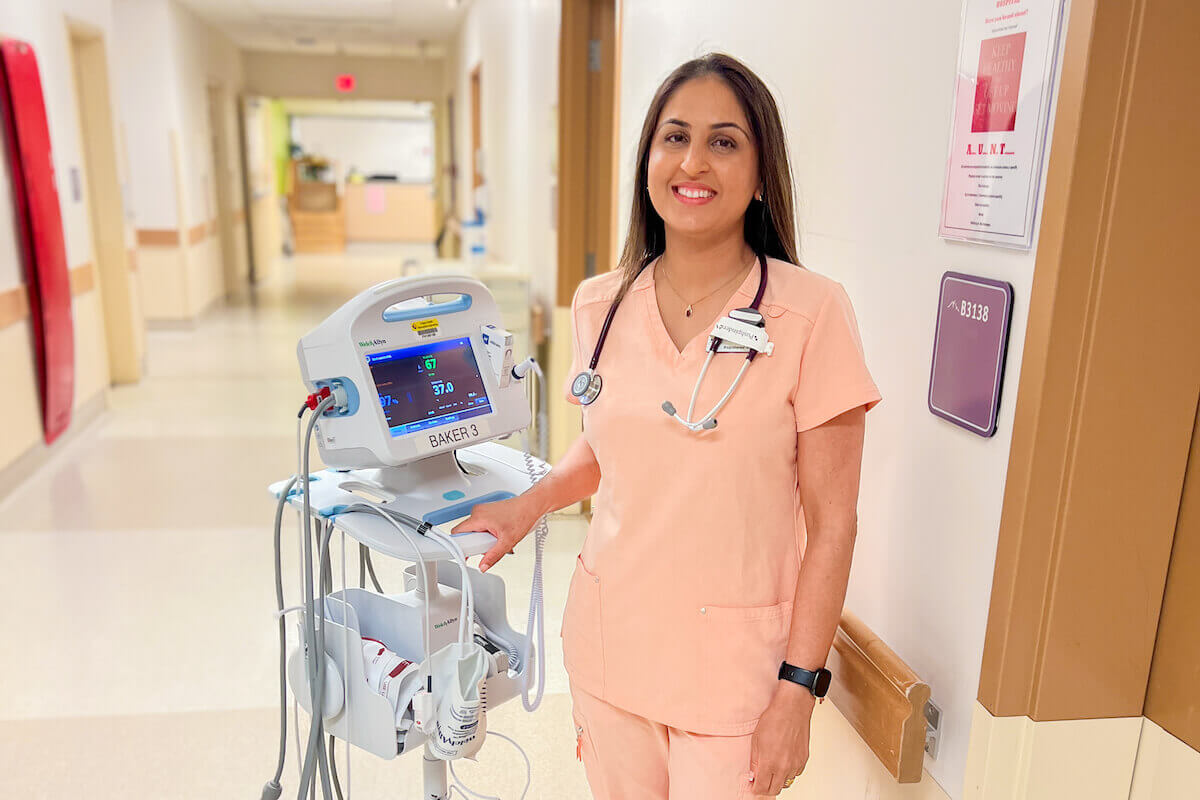
Born in 1980 in Hoshiarpur, Pushpinder Kaur grew up as the daughter of two teachers, and the sister of one brother. While many girls of her time weren’t educated in India, her parents and extended family supported the idea of female education.
Little did she know at the time how much that support would impact her life, and her ability to survive in a new country.
When she reached grade 2, Pushpinder’s parents took teaching jobs at a government school in rural Punjab. The whole family moved to a village called Lidder Kalan.
While it was an option to enroll their children in the school they taught at, her parents chose not to go that route. They wanted Pushpinder and her brother to attend an English-medium school – one that was not attached to their positions at work.
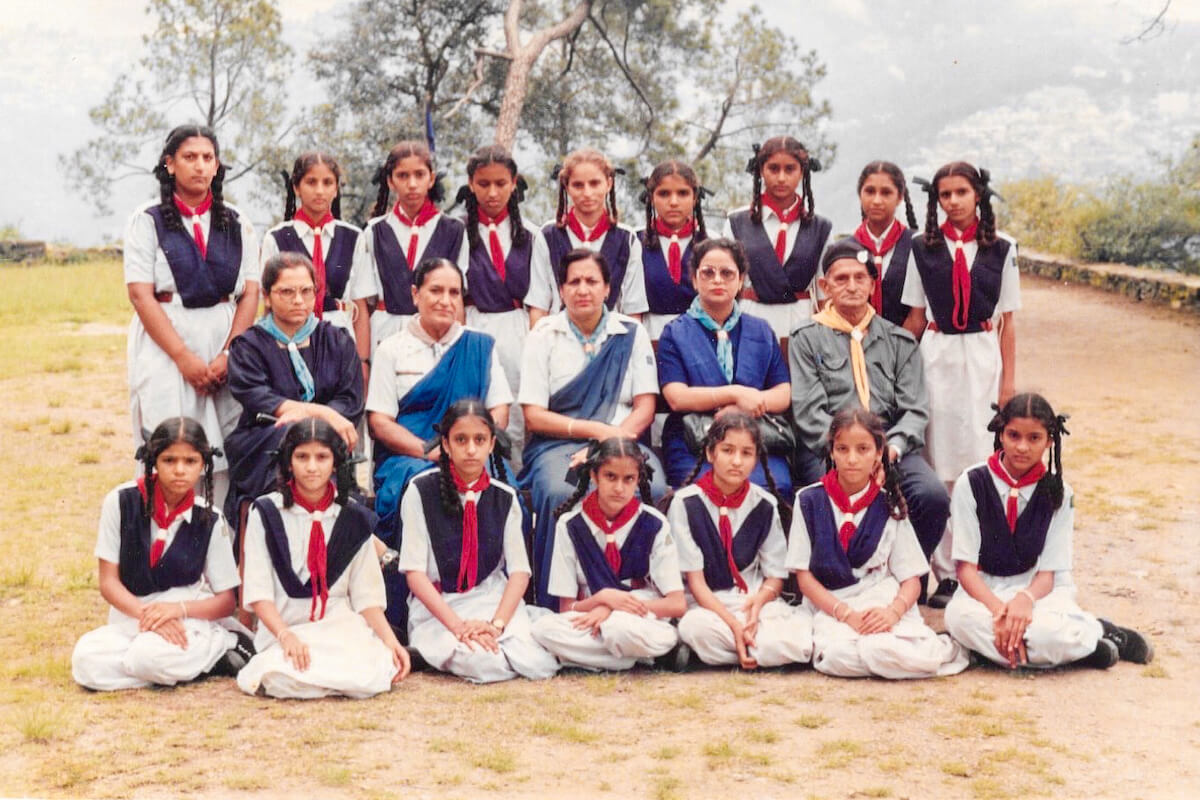
In those days, finding an English-language primary school in rural Punjab was uncommon. By happenstance, the family learned of a new school that had opened in the area, called Guru Nanak Mission Public School, in Dhahan Kaleran. It was about 30 minutes away by car.
The family learned of the school through the founder of the charity it was run by: Mr. Budh Singh Dhahan. The man was an advocate of charitable work and social development in the area. He founded Guru Nanak Mission Medical and Educational Trust (GN Trust), which had already built a hospital by that time – one of the first in the area. The locals who knew him affectionately called him “Baba Ji.”
Inspiring the start of a school bus program in rural Punjab
There was just one problem when it came to the parent’s wishes: Liddar Kalan did not have a bus stop. There was no practical way to get their children from the village to the school.
Mr. Dhahan was eager to have the children attend his school, so he said he would take care of it. He arranged for an auto rickshaw to pick up the siblings and drop them off at home every day.
Later, the auto rickshaw would inspire what is today, a fleet of 24 school buses transporting children from roughly 125 surrounding villages so they can attend a quality and affordable school in Dhahan-Kaleran.
When the villagers in Lidder Kalan saw Pushpinder and her brother being picked up every day, they wanted to send their own children to school. Soon, a van, and then a bus, was picking up roughly two dozen children in various villages.
Inspiring more parents to send girls to school
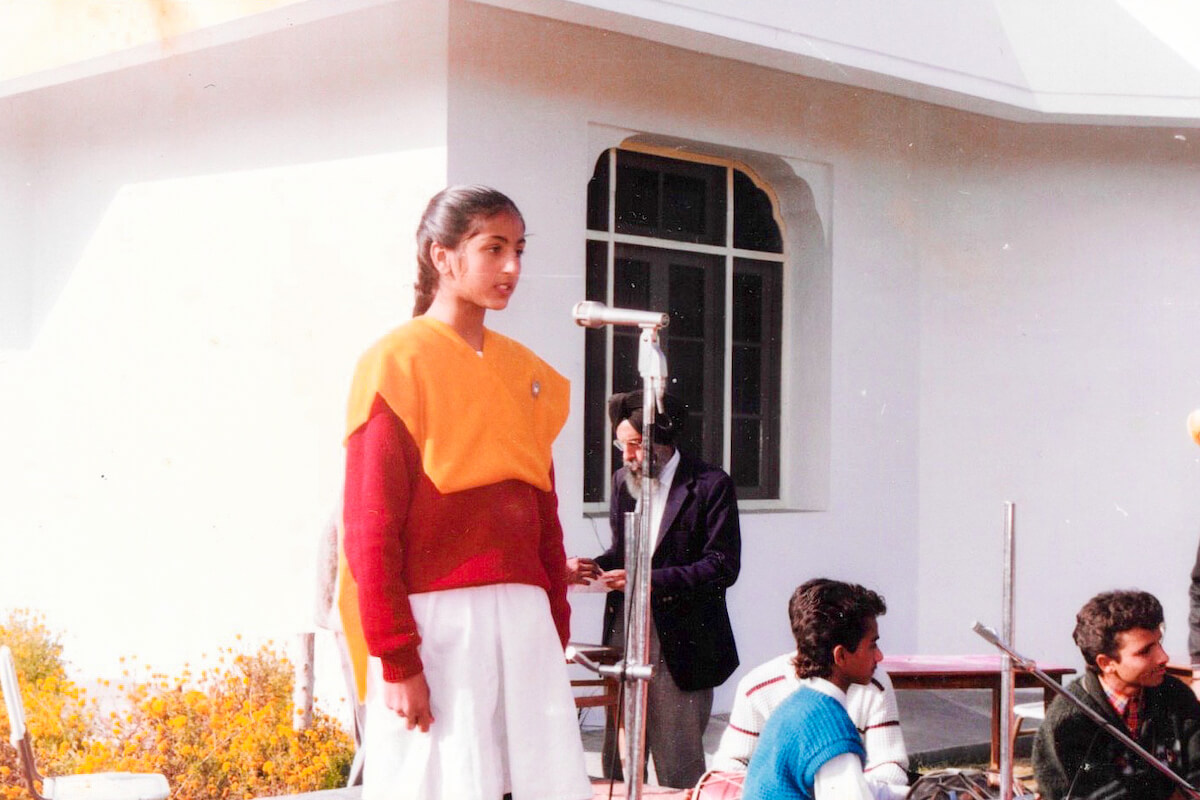
A more interesting phenomenon also took place with the school bus program: the village’s parents started sending their girls to school. From what Pushpinder remembers, this was unheard of prior to her arrival in Lidder Kalan.
In those days, sending girls out of the home without a parent was considered risky. But, the villagers trusted the new teachers in town. Pushpinder’s parents assured them that their girls would be safe at Guru Nanak Mission Public School.
Being part of a new school community in rural Punjab
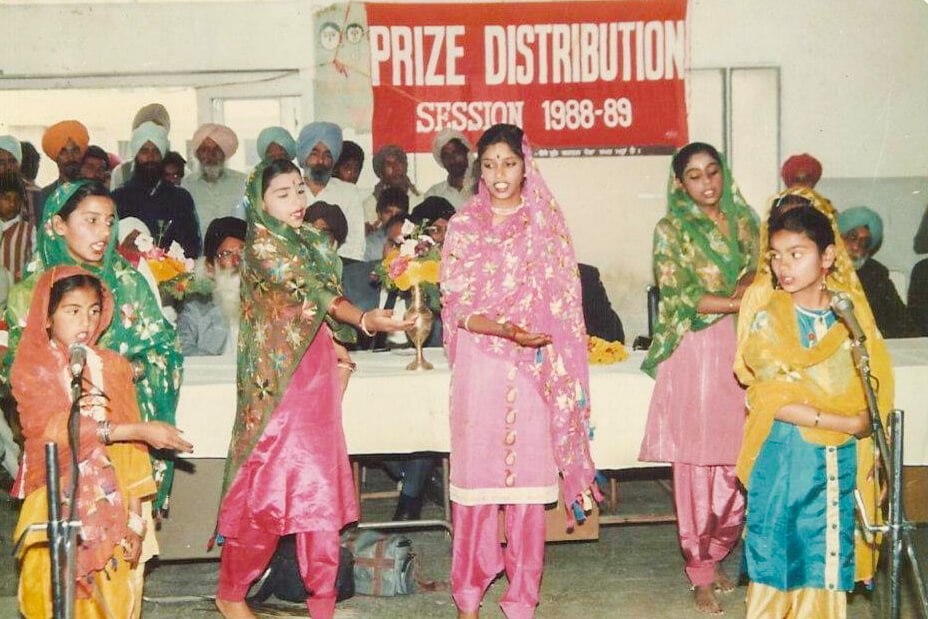
The elementary school was so new, Pusphinder remembers her class sitting on the floor, since there were no chairs yet. They were taught in the same building where the hospital was run. But, thanks to Mr. Dhahan’s persistent fundraising efforts, the school eventually grew into its own building next to the hospital. It also began offering higher and higher grades.
Pushpinder rode to school with her classmates every day until grade 10, in 1996. She grew up as part of a close knit network on the gated campus. The teachers, medical staff and Mr. Dhahan’s family knew her well.
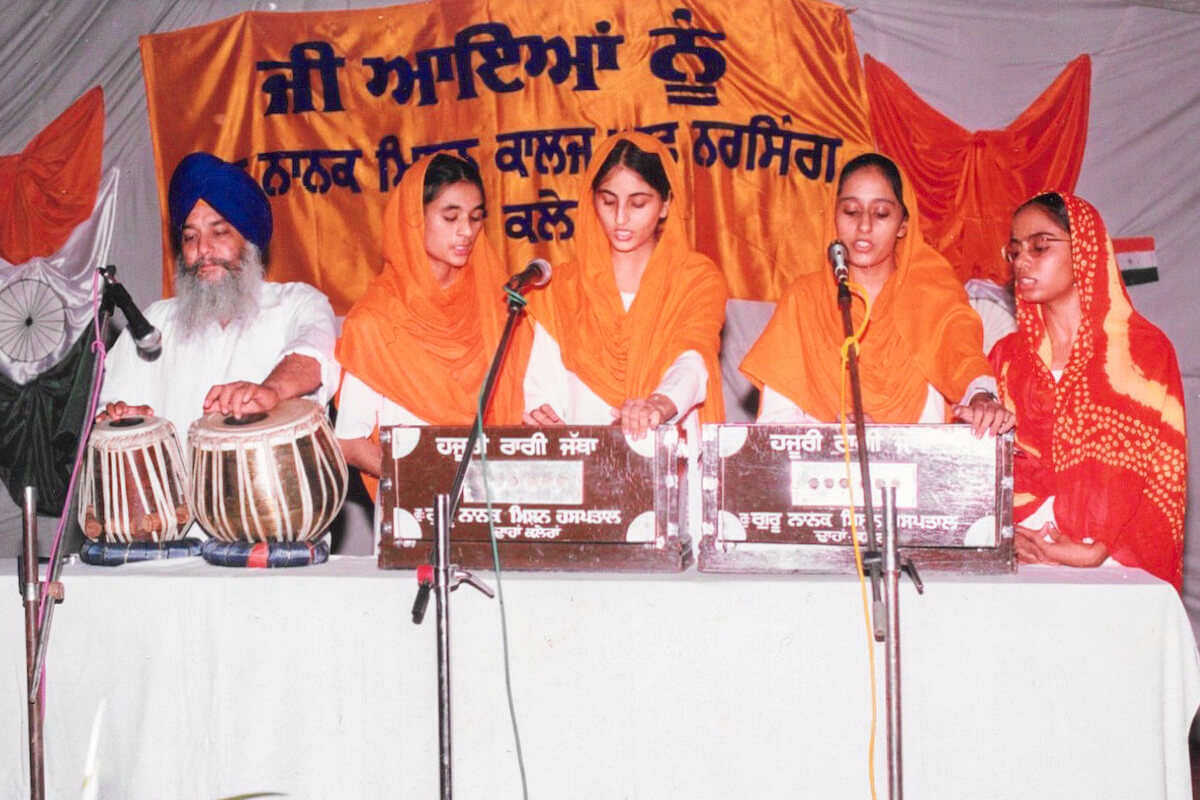
From grades seven to 10, Pushpinder and six of her classmates stayed in the upper unit of the Dhahan home during the week, so they could learn “kirtan” (i.e. orchestrated Sikh hymns). Her parents came to visit nightly. There was mutual trust among the community and, according to Pushpinder, “everyone was a family to us. They loved us.”
When remembering Mr. Dhahan, Pushpinder remarks, “we never felt like we could never talk to him. He was very approachable. We would say, ‘Baba Ji we are doing this,’ or ‘we are doing that.’ We were very close. We felt privileged that we were living on top of his house. We were so mischievous and would go to his house any time.”
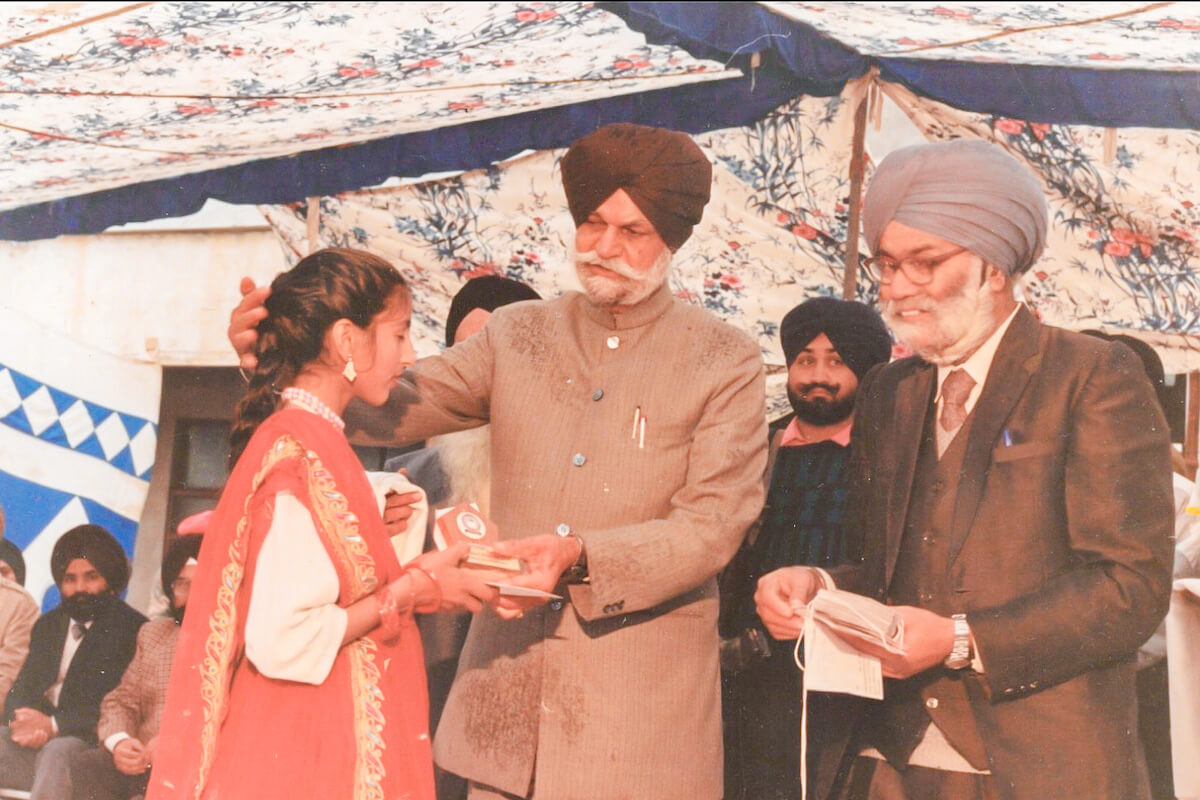
Deciding to pursue higher education in nursing – a little known profession in Punjab
In India, high school education stops at grade 10. Grade 11 and 12 are considered “college.” Since Guru Nanak Mission Public School was not yet offering these higher grades, Pushpinder completed them in Banga, a nearby city. Students pick a stream of study for grade 11 and 12, and Pushpinder chose the medical stream.
It was her grade 12 biology teacher who first encouraged her to go into nursing. This was a novel thought at the time; in India, bedside nursing was considered an undesirable profession.
“In the rural areas, no one had any clue what nursing is,” explains Pushpinder. “Not many nursing colleges were open at that time either. And BScN degrees were not common. It was a big question in my family, ‘why nursing’? But my parents understood.”
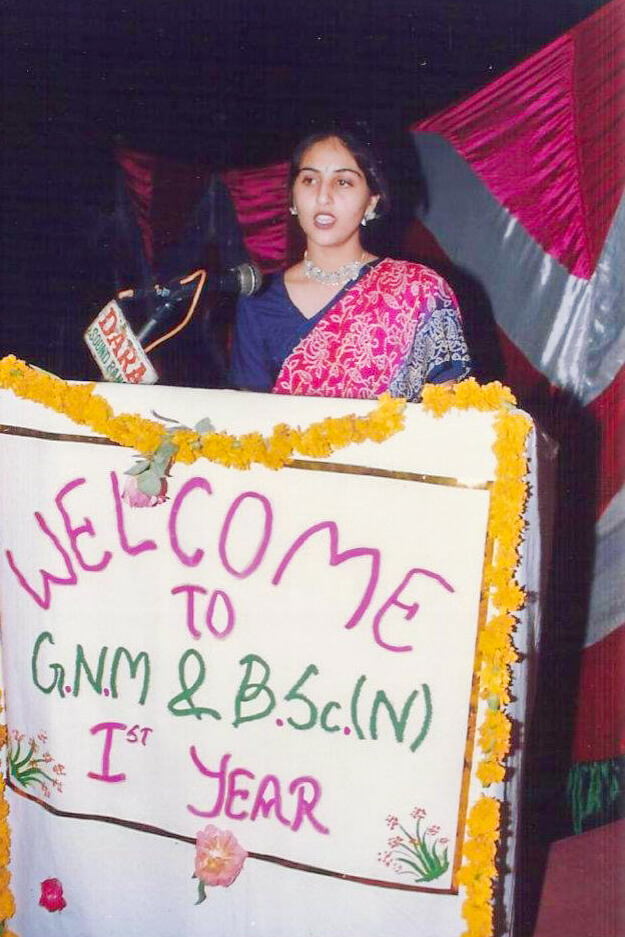
She believes the societal notion was that women shouldn’t be working alongside men, or come into close contact with them (such as for doing IV insertions). The shift work would also present a challenge for mothers with children to care for.
“It was not until I came to Canada as an exchange student in 2003 that I realized, no, even bedside nursing is ok, and that nurses have so much respect. We had no idea about this in India,” remarks Pushpinder.
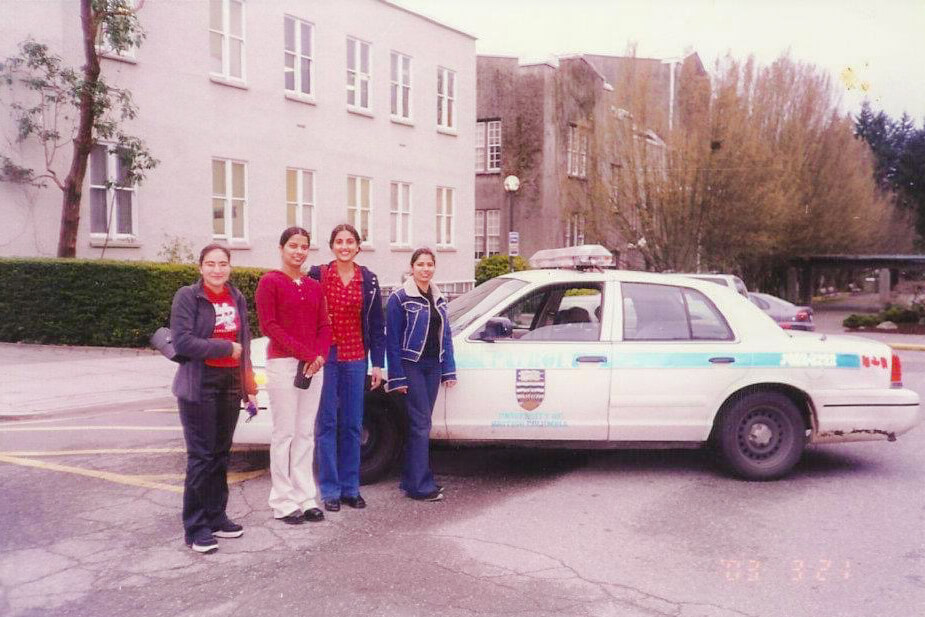
However, there was one aspect of a nursing degree that appealed to Pushpinder: she could go into teaching. She had witnessed her mother’s independence and work-life balance as a teacher. She decided that nursing would combine her interest in the sciences with her desire to be a working mom. And, if she wanted to, she could advance to the PhD level in the future.
Choosing the ‘home’ she knew for nursing college
In 1999, after it was settled that she would go into nursing, Pushpinder only had to choose a school to go to. To her, there were no second thoughts: she wanted to go ‘home’ to the campus where she grew up as a schoolgirl.
Thankfully, the timing was perfect for Pushpinder.
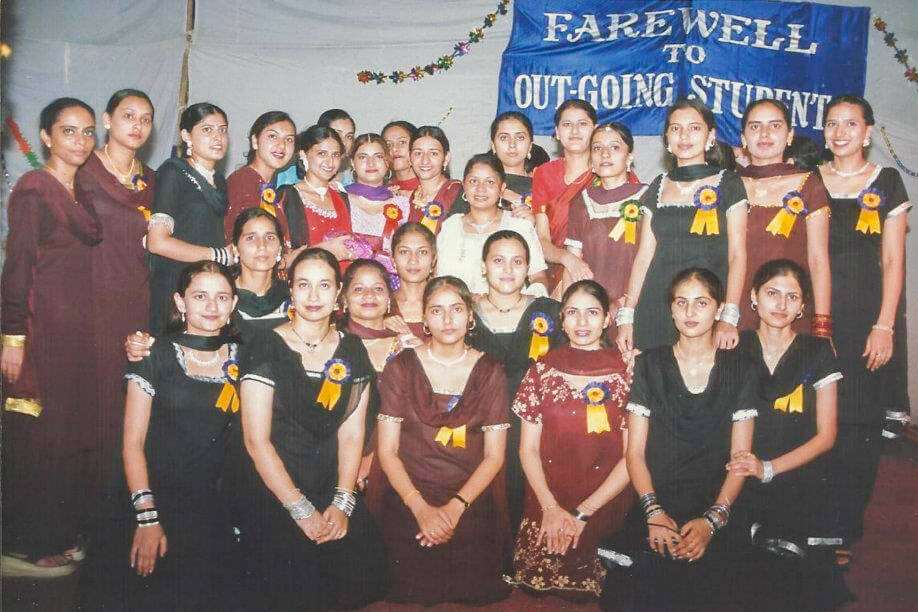
In 1993, the Guru Nanak Institute of Nursing was established under the direction of Mr. Dhahan and other board members of GN Trust.
By 1998, the institute was renamed to “Guru Nanak College of Nursing.” The name change came after a collaboration with Canada India Education Society (CIES), a team of nursing professors at the University of British Columbia (UBC) and Guru Nanak Dev University in Amritsar. The collaboration, spearheaded by Barj (Barjinder) S. Dhahan, son of Mr. Budh Singh Dhahan, established a four-year Bachelor of Science in Nursing (BScN) degree at the school – the first of its kind in rural Punjab.
Pushpinder entered the second class ever to study in the BScN program in Dhahan-Kaleran.
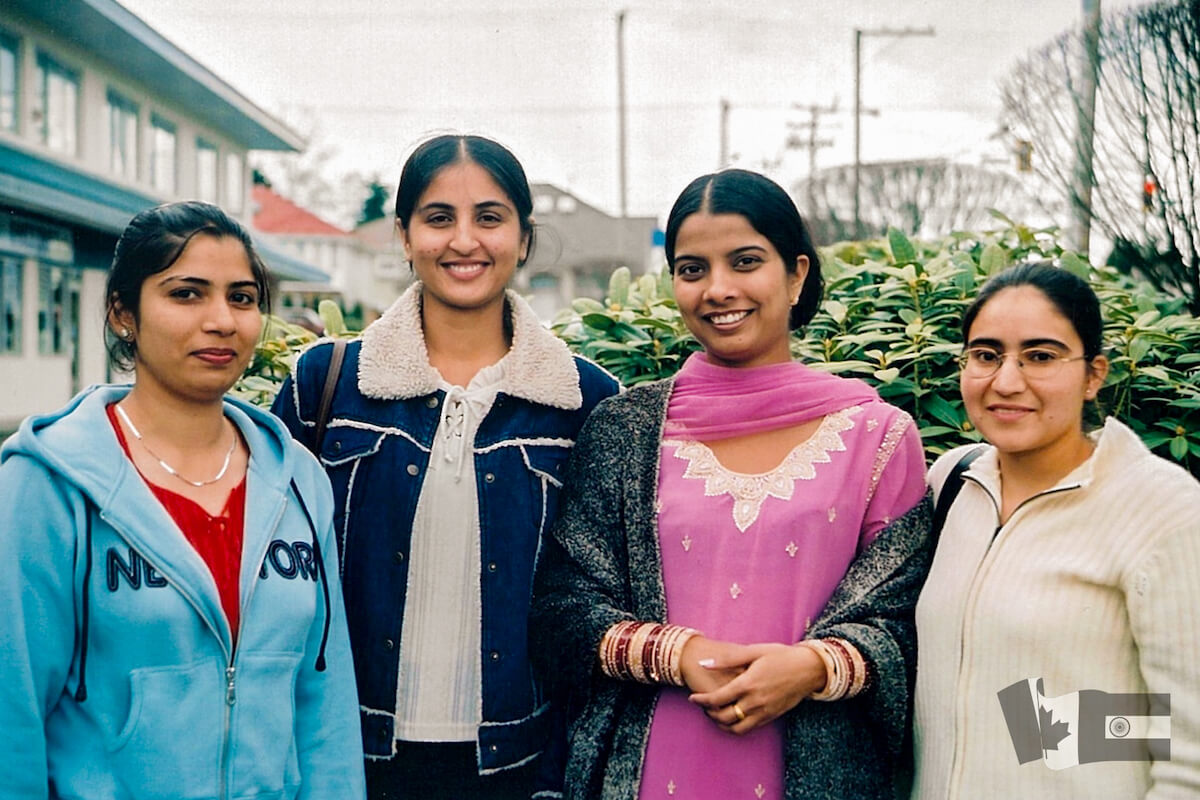
“That life was the best life we had,” she recalls. “All my friends are from that time. We have a Whatsapp group and we still stay in touch.”
“My teachers, when it was time to be professional, they were professional. But outside of teaching times, they were just like family,” she says. “It was student centered – they really thought about you.”
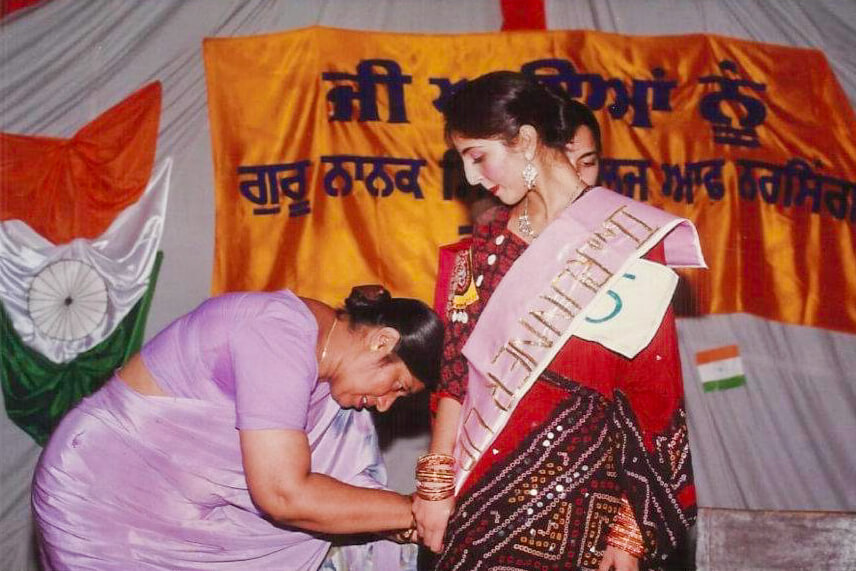
She graduated in 2003, and was immediately hired as a clinical instructor at Dayanand Medical College and Hospital in Ludhiana (about 1 hour away).
Getting married and starting a career as a Canadian nurse
In 2005, Pushpinder came to Canada as a bride-to-be. She married her husband and moved to Abbotsford, B.C.
To be able to continue working as a nurse, she submitted her degree to the International Credential Evaluation Service (ICES). The organization equated her Indian BScN to Canadian standards. After an examination and an optional course, she was hired as a registered nurse (RN) at the old Abbotsford Hospital.
Pushpinder went on to have two children – a boy and a girl.
Surviving as a single mom in Canada, thanks to her education
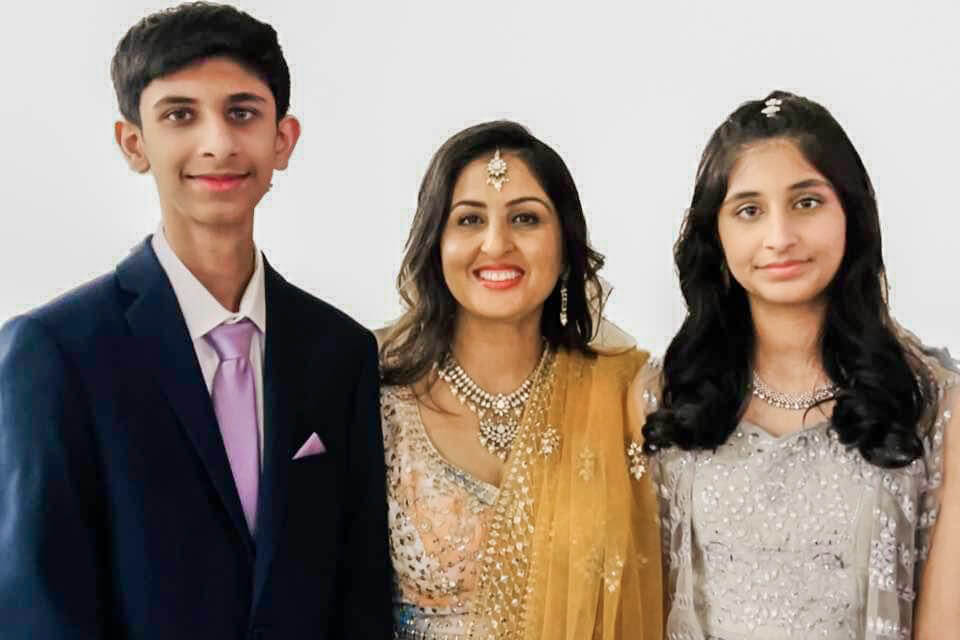
Unfortunately, life didn’t go as planned. Pushpinder divorced in 2010.
But, she says, she survived the turmoil in large part because of her education.
“I would say I have survived in Canada because of my years in Dhahan-Kaleran,” she says. “I had to start over. I could only do that because I had a good education and a good career.”
Thankfully, she had help from family and coworkers to start a new life with her children in Canada.
Fulfilling her service to mankind through nursing
Today, Pushpinder is happily remarried. Her focus is now on her childrens’ education.
She still works as a registered nurse, which she loves.
“I enjoy communicating with patients and taking care of others. I feel connected to the profession spiritually. That has been my goal since Grade 8 when I learned kirtan. I think that when I am helping others, I am achieving seva*. Just like Budh Singh Baba Ji did for everyone. He has prepared me to spread it further.”
*Note: “seva” means “selfless service,“ and is an important part of the Sikh faith.
At Canada India Education Society, our hallmark projects include fundraising for the schools that Pushpinder went to, and the hospital where she was trained as a nurse.
While Pushpinder’s parents were inspirational in their desire to educate both their children, the option to do so doesn’t exist for many in rural Punjab. Whether for finances or cultural reasons, we aim to change that.
But, we can’t do it without your help.
Please consider donating. Your contribution will come with an official tax receipt.